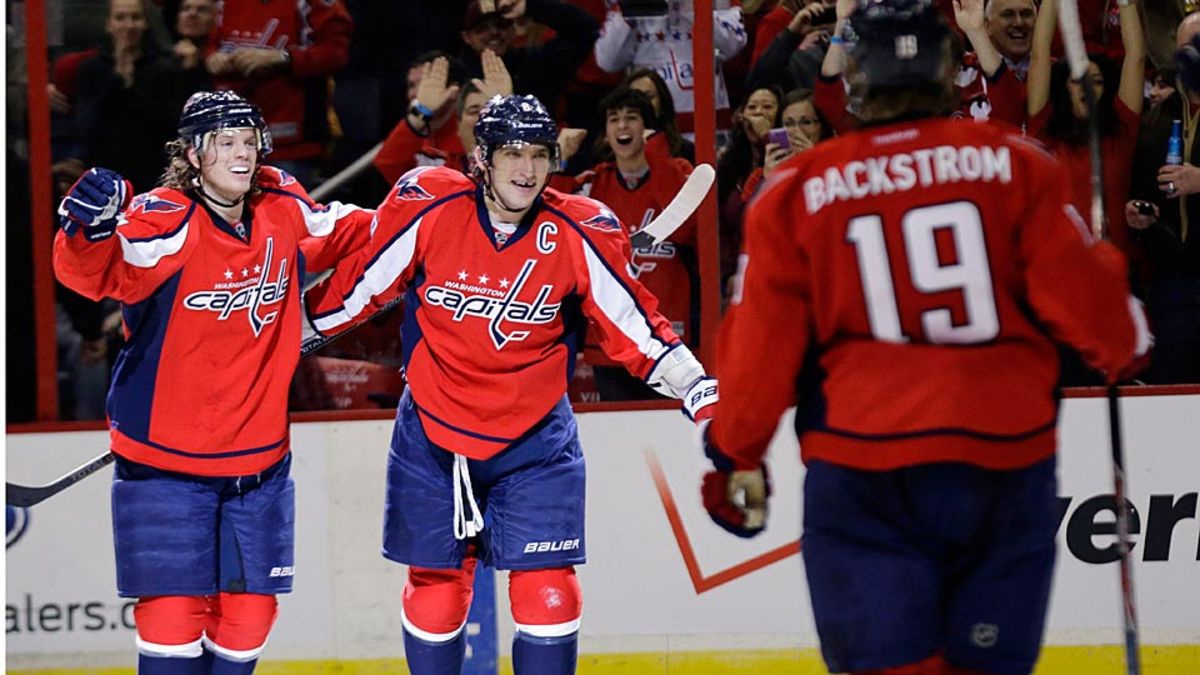
Most dazzling three-on-three overtime trios if NHL adopts format
The NHL’s general managers finally caved to the anti-shootout crowd on Tuesday, recommending the use of three-on-three play in overtime to diminish the impact of the skills competition on the standings.
There’s no telling yet if the plan will be adopted—there are still a couple of steps to be taken before we see this in action—or what form it might take. We could see a seven-minute hybrid similar to what the AHL has used this season, with OT starting at four-on-four, and then switching to three-on-three at the first whistle after three minutes of play. It could remain a mix of four-on-four and three-on-three for a total of five minutes. Or we could see the end of four-on-four entirely.
Roundtable: Are 3-on-3 OT, coaches' challenge good changes for the NHL?
However it plays out, it will present coaches with the thing they love most: the chance to out-strategize their opponents.
At this point, there’s no consensus on how best to tackle this situation ... or even if there is a one-size-fits-all solution. Should teams employ three forwards? Two forwards and a defenseman? Two D-men and a forward? Or will a team’s approach be dictated by the talent it has on hand?
Who knows?
We can say this much: It might not always be the players you’d expect who will excel. After all, given the sort of time and space that will be afforded by three-on-three play, almost any NHL player can create magic. Just think about that show-stopping shootout goal scored by the Flames’ David Schlemko a few days back. You might be surprised by the reservoirs of talent that will be tapped in this format.
Safe to say though that there will be an emphasis on speed, skill and creativity. And there will be a premium on shooters who can be counted on to hit the net consistently. Nothing will be more dangerous in this format than a wide attempt that rings around the boards only to create an opportunity going the other way.
So, who’ll shine if this plan eventually passes muster with the NHL’s Board of Governors and the Competition Committee? These are the trios that we can’t wait to see.
10. Pavel Datsyuk, Darren Helm, Marek Zidlicky
No telling if Zidlicky, a free agent this summer, will even be playing for the Red Wings next season when three-on-three is expected to be enacted. But if money doesn’t sway the hard-shooting 38-year-old to re-sign with Detroit, maybe the chance to be part of this dynamic trio will.
Beware the slides of March: slumping teams not good Stanley Cup bets
9. Matt Duchene, Nathan MacKinnon, Tyson Barrie
Granted, the Avalanche’s power play hasn’t been the best this season (all right, at 29th it’s been downright terrible), but giving these baby-faced burners some open ice and matching them with a high-end distributor like Barrie would be magic.
8. Rick Nash, Ryan McDonagh, Keith Yandle
Yandle’s a natural rover, so this is a game he was born to play and he could get the chance with the Rangers. McDonagh is solid at both ends of the ice and Nash has the speed and finishing touch to match him.
7. Jeff Carter, Tyler Toffoli, Drew Doughty
The smart money says Kings coach Darryl Sutter will utilize a two-D set, and if he does go with two forwards it’ll probably be Anze Kopitar and Marian Gaborik. But man, how much fun would this trio be? Toffoli and Carter bring pace, playmaking and finish. And Doughty is Doughty. ’Nuff said.
6. Vladimir Tarasenko, Kevin Shattenkirk, Jay Bouwmeester
New York Rangers continue reign atop SI.com's NHL Power Rankings
Blues whiz kid Tarasenko ranks among the most ingenious one-on-one players in the game today. Shattenkirk is a two-way beauty. And nobody looks as fluid with open ice as J-Bo. Watching him at three-on-three will be like seeing Secretariat flying past the twin spires at Churchill Downs.
5. Henrik Sedin, Daniel Sedin, Alex Edler
The Canucks’ remarkable twins are magical when the ice is thick with bodies. Will they be as thrilling when facing less defensive pressure? You bet.
4. Patrick Kane, Marian Hossa, Duncan Keith
Will the presumed breakneck pace of three-on-three bring out the best in Kane? He seems to thrive when he slows the game down, but he’s so ridiculously gifted that we want to see him try this. Keith adds elite puck-moving skills. Hossa’s reliable defensively and he already plays the point on the Blackhawks’ power play, so he’s practically a second rover.
3. Max Pacioretty, P.K. Subban, Andrei Markov
You can bet the farm that Canadiens coach Michel Therrien will go with a two-D set, right? At least he can start with Subban, who might be the best possession driver among the league’s defensemen. Markov can play safety valve or fire starter, and MaxPac brings speed, a terrific one-timer and an ability to hit the net that will be so crucial for success.
2. Evgeni Malkin, Derrick Pouliot, Kris Letang
The Penguins might have more options than any team, but this trio would be the most electrifying. Malkin can play any way you want up front, and Letang is the butter that greases the pan. Pouliot has proved to be a clever and creative option in limited exposure on the power play. He has the speed and the smarts to make this group click.
1. Alex Ovechkin, Nicklas Backstrom, John Carlson
The Capitals already go with four forwards on the power play, so it’s a safe bet that they’ll go with two at three-on-three. Mike Green might seem like the obvious choice as the lone defenseman, but Washington’s power play gets more shots, and goals, when Carlson mans the point. He keeps the puck moving. And Ovechkin? With all that time and space to unleash his one-timer? It won’t be fair.































